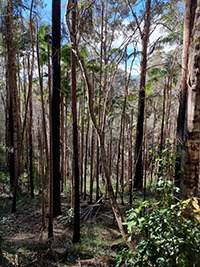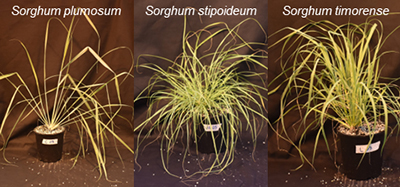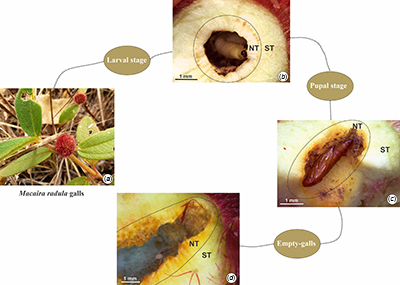Australian Journal of Botany
Volume 72
Number 1 2024
This study examined how floristically diverse components of wet sclerophyll forest and adjoining dry sclerophyll communities in the Nightcap Range, North Coast, New South Wales, responded to fire. Functional and phytogeographical clades composing the flora displayed distinctive patterns of resprouting and seedling-recruitment fire response. Predominant fire responses (OSR, FR and OR) in phytogeographic clades in WSRf were: Gondwanan-rainforest (OR), immigrant-rainforest (OSR) and autochthonous-sclerophyll components (OSR and FR), with exceptions. The species complex in intergrading rainforest and sclerophyll vegetation appears to maintain diversity and stability by different species fire-response syndromes. Photograph by A. Benwell.
Wild Sorghum species dominate parts of northern Australia and contain potentially useful traits for crop improvement, but the diversity within these species has not been sufficiently examined. We assessed phenotypic and genotypic diversity of three Sorghum species and found unexpected complexity in the relationships among the environment, genotype and phenotype. Our results challenge assumptions that diversity levels can be assumed from phenotype or environment alone, with implications for conservation and crop improvement. Photograph by Jack McCausland.
Insects can live inside plant galls, and the composition of the gall cell walls plays an important role in its structure and function. Herein, the cell walls of Macairea radula galls changed throughout the developmental stages of P. oligophaga and between storage and nutritive tissues. Cell wall epitopes in the storage tissue gave it a good balance between rigidity and flexibility, and xyloglucans in the nutritive tissue seem to be important for the insect’s diet in the larval stage. Image by Patrícia Dias Santos.








